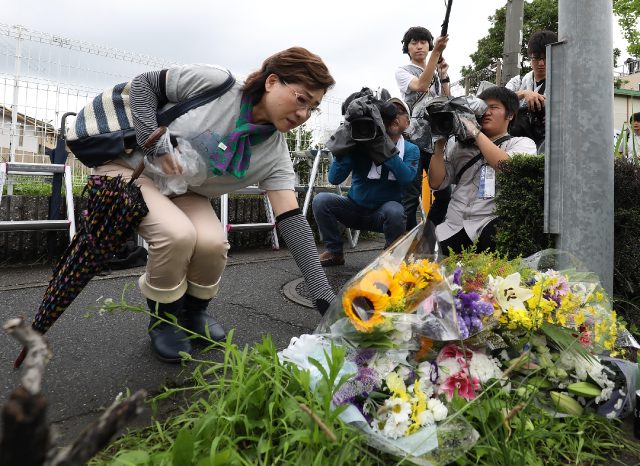Violent crime is rare in Japan, which has a low murder rate and some of the world’s toughest gun laws, but several horrific attacks have shocked the country in recent decades.
With the nation now reeling in the wake of former prime minister Shinzo Abe’s death after being shot at a campaign event on Friday, here is a run-down of some of the worst recent attacks in the famously safe country:
2021: clinic fire, train assaults
An arson attack in December 2021 at a mental health clinic in Osaka killed 25 people, with the victims trapped inside the unit on the fourth floor of a narrow commercial building.
The 61-year-old man suspected of starting the fire, a former patient, died in hospital days later.
Last year also saw a spate of assaults on and around Japan’s rail network, including an attack in Tokyo on Halloween in which a 24-year-old man allegedly stabbed a passenger and started a fire while wearing an outfit reminiscent of comic book villain the Joker.
2019: Kyoto Animation arson
Japan’s deadliest violent crime in recent memory was an arson attack at an animation studio in Kyoto that left 36 people dead.
Many of those killed in the July 2019 blaze at Kyoto Animation were young staff, and the fire at the three-storey building sent shockwaves through the global anime industry.
The suspect Shinji Aoba was charged with murder after he nearly died from severe burns sustained in the blaze.
Deadly fires are unusual in Japan, which has strict building standards. Arson was also suspected as the cause of a 2001 explosion and fire at a nightclub in Tokyo’s central Shinjuku district that killed 44 people, but no culprit was found.
2016: Sagamihara stabbings
A Japanese man was sentenced to death for stabbing to death 19 people with disabilities at a care home in July 2016.
Satoshi Uematsu, a former employee of the facility, never disputed his involvement in the grisly rampage but his lawyers argued he had a “mental disorder” linked to marijuana use.
After the horrifying attack in Sagamihara, southwest of Tokyo, Uematsu reportedly said he had targeted people with disabilities because they “only create unhappiness”.
A previous massacre in Tokyo’s Akihabara district in 2008 had led Japan to tighten its knife laws. In that attack, a disgruntled auto worker rammed a rented truck into pedestrians before slashing people at random with a double-edged dagger, killing seven.
2007: Nagasaki mayor shooting
The last assassination of a top political figure in Japan was in 1960, when Inejiro Asanuma, the leader of the Japan Socialist Party, was stabbed by a right-wing youth.
But in April 2007, a yakuza mobster shot dead Nagasaki mayor Iccho Ito as he campaigned for re-election.
1995: Cult gas attack
It took place nearly three decades ago, but remains Japan’s most notorious attack: in March 1995, the doomsday cult Aum Shinrikyo released toxic sarin gas in Tokyo’s subway network, killing 13 people and sickening thousands of others.
The chemical was released in liquid form at five locations during rush hour, causing commuters to stagger from trains struggling to breathe.
It prompted a crackdown on the cult’s headquarters near Mount Fuji, where authorities discovered a plant capable of producing enough sarin to kill millions.
In total 13 Aum members, including the cult’s near-blind leader Shoko Asahara, were executed over the crime.

COMMENTS
Please let us know if you're having issues with commenting.